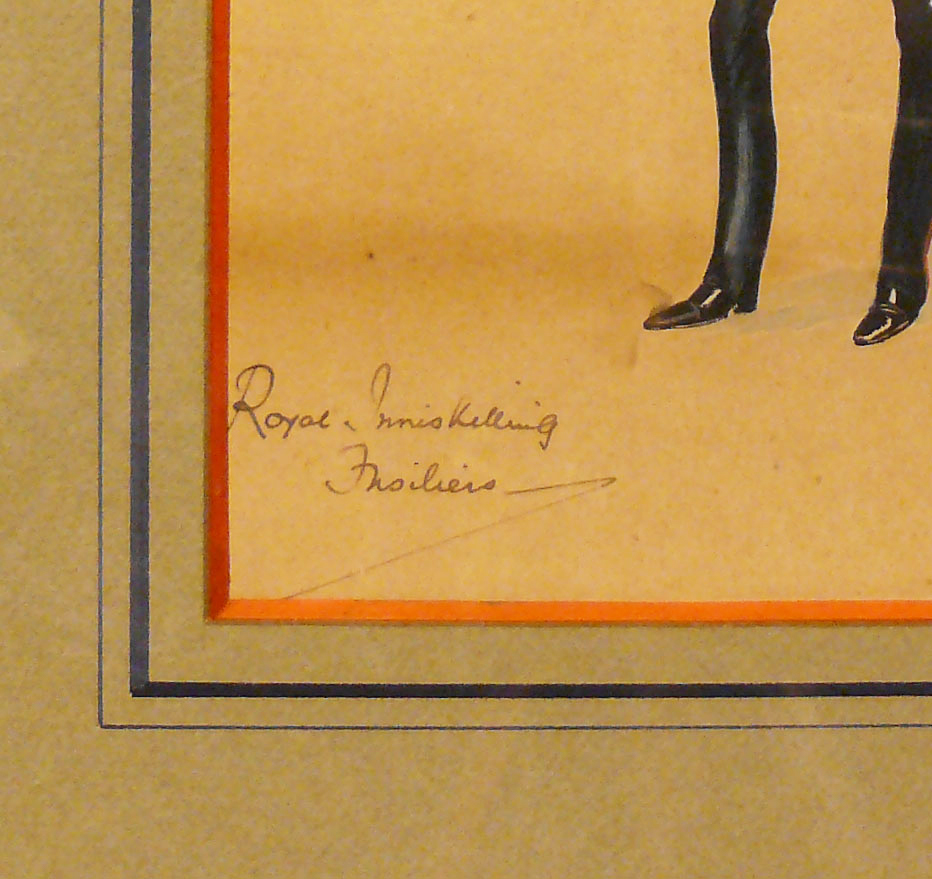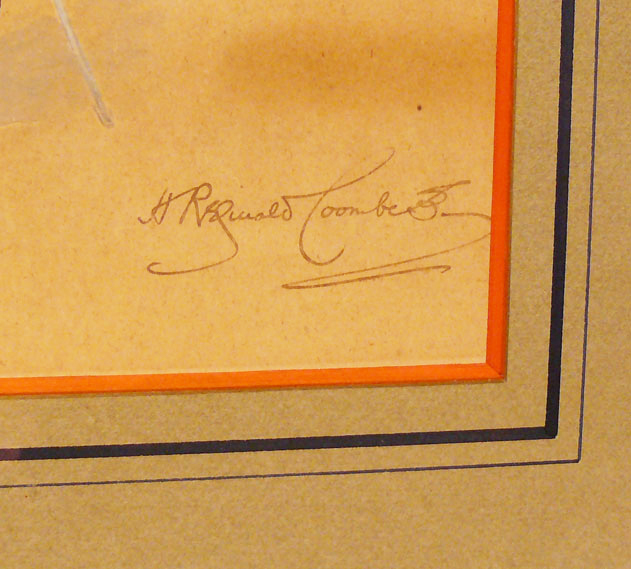An Original, Beautiful, Original Watercolour of a 19th Century Officer Royal Inniskilling Fusiliers, H Reginald Coombes
485mm x 379mm frame size. Signed by the artist H Reginald Coombes. A very well painted piece in good condition and most charming style, of one of the officers of one of the great historical regiments of the British Army. The First Battalion of the 27th distinguished itself at the Battle of Maida in Southern Italy in 1806, and together with the Second and Third Battalions formed part of the Peninsula Army, which under the Duke of Wellington cleared Spain and Portugal of the French between the years 1809 and 1812, and finally entered France in triumph. There is not space enough here to recount all the details of the Regiment’s doings in the campaign but the names Badajoz, Salamanca, Vittoria, Pyrenees, Nivelle, Orthes, and Toulouse emblazoned on the Colours are sufficient testimony that it played a not undistinguished part therein.
The 27th was the only Irish infantry regiment (out of eight in the army) to fight at the Battle of Waterloo on the 18th June 1815, where the Emperor Napoleon was finally overthrown and his dreams of world-domination dispelled forever. It is perhaps its most cherished battle-honour as there it held a position of vital importance against great odds the whole day and in after years was acknowledged by the Duke of Wellington to have saved the centre of the line.
After a period of peace it found itself in South Africa where between 1837 and 1847 it was engaged in several of the numerous native wars that occurred during those years. From 1854 and 1868 it served in India taking part in the suppression of the Indian Mutiny and helping to preserve law and order in North-West India. In 1881, as a result of the reforms begun in 1870, the Twenty-Seventh became the First Battalion Royal Inniskilling Fusiliers and a Second Battalion (descended from an East India Company Regiment, the Third Madras Europeans, later the Hundred and Eighth Regiment of the Queen’s Service) came into being; at the same time three Regiments of Irish Militia became the Third, Fourth and Fifth Battalions.
The Second Battalion saw service in the great uprising of the Pathan tribes in the Tirah Valley on the North-west frontier of India in 1897-98, and after the end of that campaign remained in India until January 1902 when it was sent to South Africa to take part in the closing stages of the Boer War. The First Battalion reached South Africa in November 1899 and was part of General Buller’s army sent to lift the siege of Ladysmith. Its first actions were at the battle of the river crossing at Colenso. Some months later, at Inniskilling Hill, the battalion’s Medical officer was awarded a Victoria Cross for rescuing a wounded officer whilst under heavy enemy fire. From late in 1901 to the end of the war in 1902 the battalion constructed and occupied numerous sections of the block-house line which divided the country into large areas surrounded by wire with fortified posts at intervals. Within these areas mounted troops drove the Boers on to the wire fences, where, being caught between two fires, they were forced to surrender.
Code: 22548
475.00 GBP





